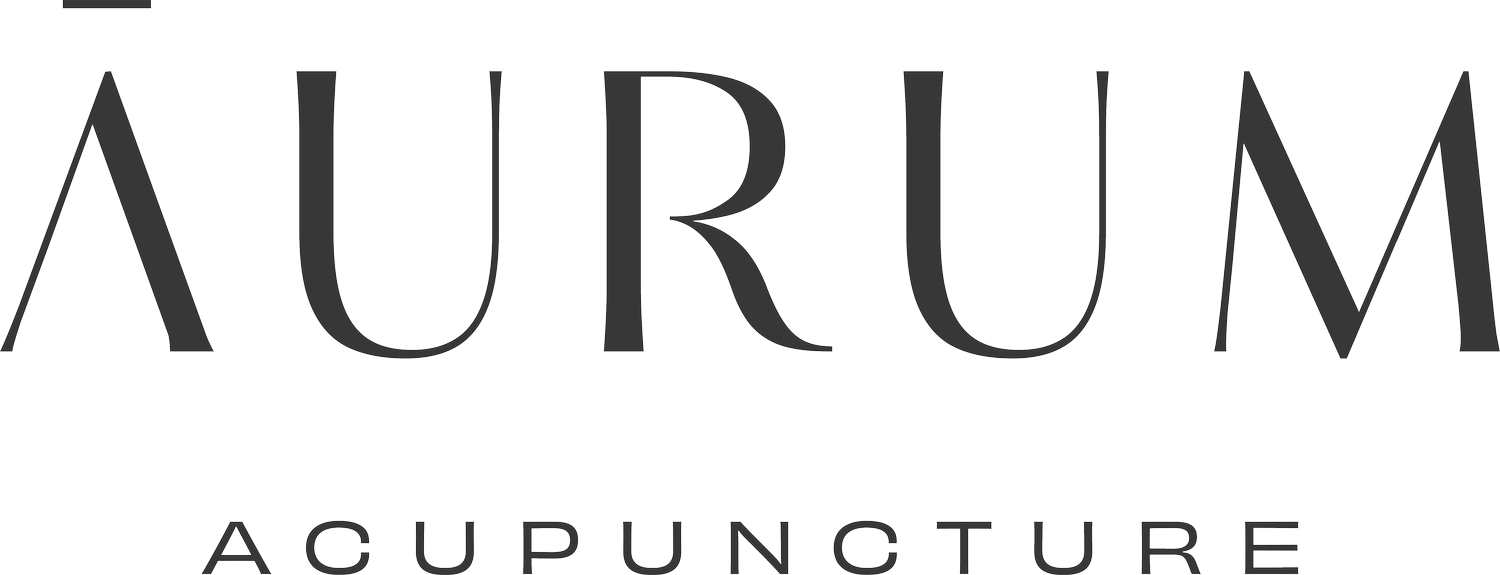Being a woman of a certain age, I feel intimately aware of the changes my body is going through at this time. It’s hard to believe when you are in your most fertile prime that one day you will experience any of these changes, but it happens to everyone and everyones body handles it differently. I’m taking about perimenopause and menopause.
Perimenopause, the transition leading up to menopause - which can last up to ten years before the actual onset of menopause - brings with it a wide array of physical and emotional changes. From hot flashes to mood swings, night sweats, brain fog, and sleep disturbances, these symptoms can significantly impact a woman’s quality of life. At Ãurum Acupuncture, we specialize in natural, holistic therapies - including acupuncture and herbs - which have been gaining attention for its efficacy in managing perimenopausal symptoms.
How Acupuncture Helps
Acupuncture is an ancient practice rooted in Traditional Chinese Medicine (TCM). It involves the insertion of fine, sterile needles at specific points on the body to stimulate energy flow, or “Qi.” This stimulation is believed to help restore balance to the body’s systems, including hormonal regulation, which can be highly beneficial during perimenopause.
Several scientific studies have begun to explore how acupuncture can offer relief for women experiencing the challenges of perimenopause. A few of the key perimenopausal symptoms that acupuncture can alleviate with supporting evidence are listed below.
1. Relief from Hot Flashes and Night Sweats
Hot flashes and night sweats are among the most common complaints during perimenopause. These symptoms are caused by fluctuations in estrogen levels, which disrupt the body’s temperature regulation. Acupuncture has shown promise in reducing the frequency and severity of hot flashes. A randomized controlled trial published in the journal Menopause found that acupuncture significantly reduced the frequency of hot flashes in perimenopausal women over an 8-week period compared to a control group . The study suggested that acupuncture works by modulating the central nervous system, which helps in thermoregulation.
2. Improved Sleep Quality
Many women experience insomnia or disrupted sleep during perimenopause, often due to night sweats and anxiety. Acupuncture has been shown to help improve sleep by promoting relaxation and balancing the autonomic nervous system. A 2016 study in Acupuncture in Medicine found that perimenopausal women receiving acupuncture reported significant improvements in their sleep quality compared to those in the control group . The mechanism involves acupuncture’s influence on increasing the secretion of melatonin, the hormone responsible for sleep regulation.
3. Brain Fog
“Brain fog” is a common symptom many women experience during perimenopause. It manifests as memory lapses, difficulty concentrating, and a general sense of mental cloudiness. This cognitive decline is often linked to the fluctuating hormone levels, particularly estrogen, during the perimenopausal transition. Research has highlighted the impact of hormonal changes on cognitive function. A study published in The Journal of Clinical Endocrinology & Metabolism found that women in perimenopause often report issues with memory and concentration, which were correlated with declining estrogen levels. This hormone plays a critical role in cognitive processes, including verbal memory and executive function. Though brain fog can be frustrating, try not to worry too much, as it is usually temporary and improves after the menopausal transition. If you’re struggling with brain fog, acupuncture may provide relief by improving overall energy flow and reducing stress, promoting clearer thinking during this transition.
4. Reducing Mood Swings and Anxiety
The hormonal shifts during perimenopause can cause emotional disturbances, including mood swings, anxiety, and irritability. Acupuncture helps regulate the body’s stress response by stimulating the parasympathetic nervous system. A 2020 review in Frontiers in Psychiatry highlighted that acupuncture is effective in reducing symptoms of anxiety, which is particularly relevant for perimenopausal women . Acupuncture can help stabilize mood by releasing endorphins and serotonin, hormones that play a role in emotional well-being.
5. Hormonal Balance and General Well-being
As estrogen and progesterone levels fluctuate during perimenopause, women can experience fatigue, low libido, and general feelings of malaise. Acupuncture may help to naturally balance hormones by promoting the release of neurochemicals that influence the endocrine system. A study published in The Journal of Clinical Endocrinology & Metabolism indicated that acupuncture can modulate hormonal levels, contributing to overall improved well-being in perimenopausal women . Many women report feeling more energized and balanced after acupuncture treatments.
Why Choose Acupuncture for Perimenopause?
Acupuncture is a gentle, non-invasive therapy that works with your body’s natural processes. It offers an individualized approach to treating perimenopausal symptoms, tailored to the specific needs of each woman. Acupuncture can complement other treatments, such as herbal remedies, diet, and lifestyle changes, to create a holistic care plan that supports women through this life transition.
At Ãurum Acupuncture, we focus on creating a nurturing environment where our clients feel supported throughout their perimenopausal journey. Our skilled practitioners tailor each acupuncture session to address your unique symptoms and promote overall wellness.
For women seeking a natural, side-effect-free option for managing perimenopausal symptoms, acupuncture offers a promising solution. If you’re interested in learning more about how acupuncture can help, contact us at Ãurum Acupuncture for a consultation.
References: 1. Menopause. “Acupuncture for Hot Flashes: A Randomized Controlled Trial.” , 2. Acupuncture in Medicine. “The Effect of Acupuncture on Sleep Quality in Perimenopausal Women.”, 3. Frontiers in Psychiatry. “Acupuncture in the Treatment of Anxiety.”, 4. The Journal of Clinical Endocrinology & Metabolism. “Acupuncture’s Effect on Hormonal Levels in Perimenopausal Women.”
This post is for informational purposes only and not a substitute for professional medical advice. Always consult your healthcare provider before starting any new treatment.





